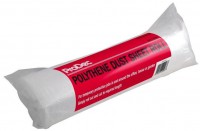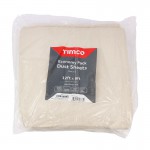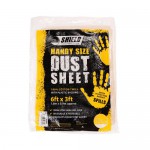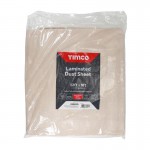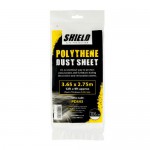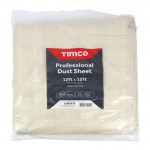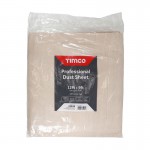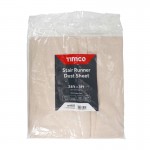 Go To Home Page
Go To Home PageView Full Site
Dust sheets are used to protect surfaces such as floors, furniture, and fixtures during painting, renovation, or construction projects. They help prevent damage from spills, drips, and dust.
Consider the size of the area you need to cover. For larger spaces, opt for bigger sheets or rolls, while smaller projects may require compact options. Measure your surfaces beforehand to ensure a proper fit.
It depends on the specific needs of your project. Polythene sheets are durable and water-resistant, making them ideal for messy tasks. Laminated sheets offer added protection against paint spills and splatters, but may be less suitable for heavy-duty use.
Yes, many dust sheets are reusable. Simply clean them after each use by shaking off excess debris or wiping them down with a damp cloth. Proper maintenance can extend the lifespan of your dust sheets.
Professional-grade dust sheets are often more durable and provide better protection than economy options. If you frequently undertake DIY projects or work as a contractor, investing in high-quality dust sheets can save you time and money in the long run.
Store dust sheets in a dry, clean area away from direct sunlight and moisture to prevent mould and mildew growth. Roll or fold them neatly to avoid creases, and store them in a dust-free container or bag for added protection.
Yes, some dust sheets are suitable for outdoor use, especially if they are made from durable materials like polythene. However, it's essential to check the product specifications to ensure it can withstand outdoor conditions such as wind, rain, and UV exposure.
Cleaning methods vary depending on the material. For fabric dust sheets, machine wash with mild detergent and air dry. For polythene or laminated sheets, wipe with a damp cloth or sponge. Avoid using harsh chemicals that may damage the material.
Yes, dust sheets provide a protective barrier that can help prevent scratches on hardwood floors caused by furniture, tools, or debris. Choose dust sheets with a smooth surface and ensure they are properly secured to avoid shifting or sliding during use.
Dispose of dust sheets according to local waste disposal regulations. If the dust sheet is made from recyclable materials, such as polythene, consider recycling it if possible. Otherwise, dispose of it in the appropriate waste bin or take it to a designated disposal facility.
| Brand |
| Price |
